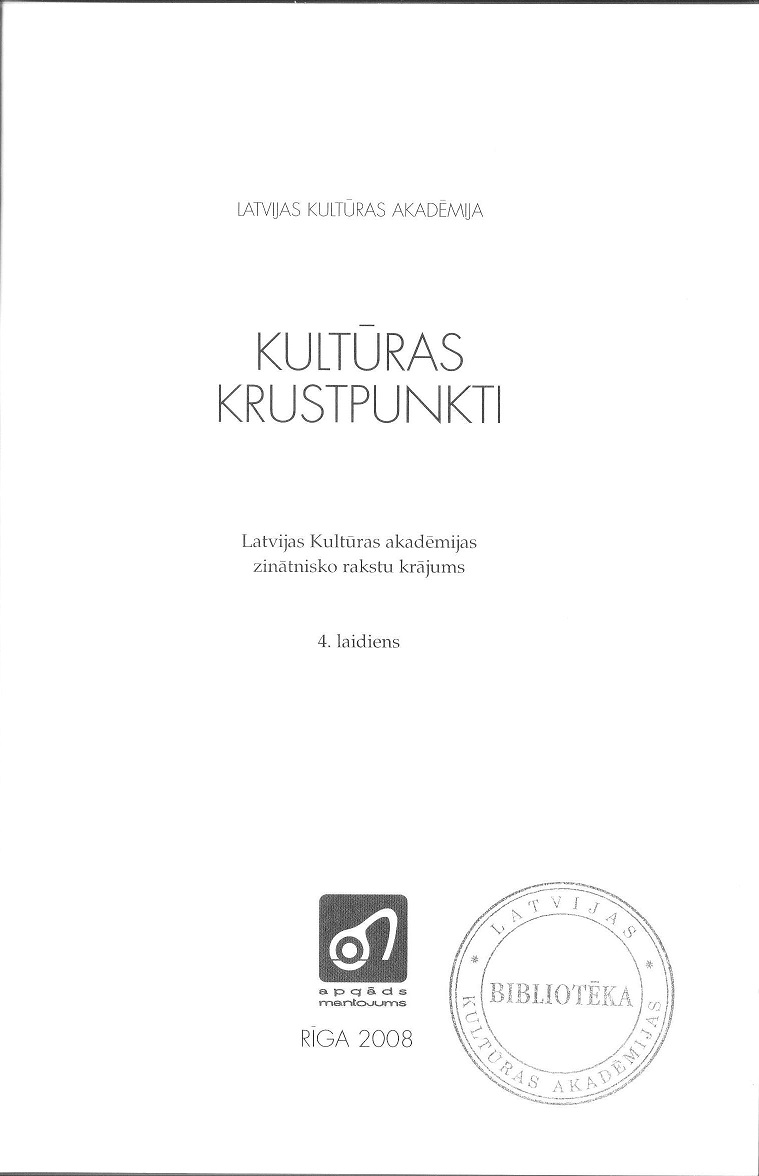Latviešu šķiršanas no krūts paražas pēc etnoloģijas, folkloras un strukturālās psiholoģijas datiem
Latvian Weaning Traditions Indicated by Data of Ethnology, Folklore and Structural Psychology
Author(s): Rūta MuktupāvelaSubject(s): Cultural history, Psychology, Customs / Folklore, Ethnohistory, Cultural Anthropology / Ethnology, Sociology of Culture
Published by: Latvijas Kultūras akadēmija
Keywords: Latvia; weaning rites; tradition; culture; rituals; ethnography; folk songs; psychology; folklore;
Summary/Abstract: Weaning rites were still observed in Latvian traditional culture at the end of the nineteenth century and the first half of the twentieth century. Basic elements of the weaning ritual are illustrated through ethnographic data, while stages of the rite are reflected in folk songs of the time period in question. Latvian peasants of the time proceeded with separation from the breast in l rict and irreversible terms. The data of the psychoanalysis of Melanie Klein hows that at the moment of separation, an infant's imagined identity is endangered: which, in turn, creates frustration, anxiety and horror. According to structural psychology, on a symbolic level this impact can be expressed with contexts, where the hero experiences sadness and pain. In I his way the psychological experience of infancy, having remained in the depth of subconsciousness, seems to be the reason why the creators of certain lolksong texts, even as adults, describe the separated person as if he / she is experiencing pain, fear and desparation. Because of their universal character, l he richness of expression and psychological intensity, weaning traditions were exploited in mythical thinking to create texts for various folklore genres such as beliefs, songs and legends. Comparative and interdisciplinary analysis of folklore shows that these traditions are also connected to certain types of fairytales.
Journal: Culture Crossroads
- Issue Year: 4/2008
- Issue No: 1
- Page Range: 67-79
- Page Count: 13
- Language: Latvian

